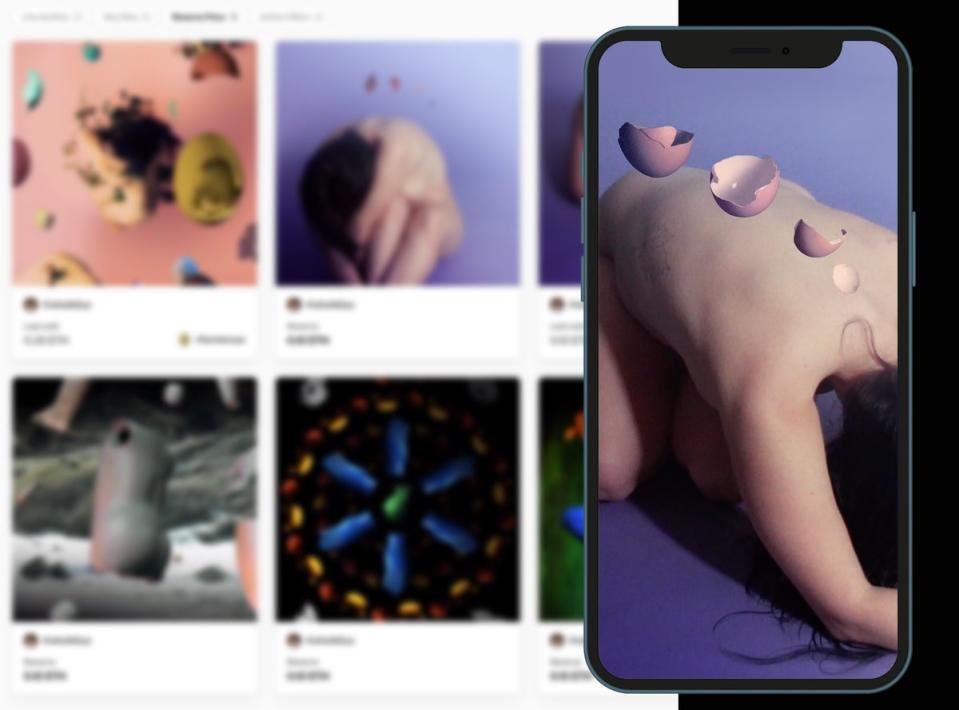Voices: I pivoted my art business to NFTs. It went so much worse than I’d imagined

I first heard about NFTs in May 2021, when I was working as a graphic designer for Saturday Night Live. We were filming a sketch starring Pete Davidson as Eminem — a parody of the song “Without Me” with the lyrics, “Now what the hell’s an NFT?”
What was a non-fungible token? Were digital art files finally worth real money? My interest was piqued.
To make an NFT, you coin – or mint – it onto a blockchain – a digital public record powered by computers. Some blockchains — like Ethereum — guzzled energy and leave large carbon footprints.
This gave me pause. Outside of SNL, I create video art with found objects. I’m meticulous about my eco practices, carefully hoarding and upcycling trash. I even use old dental floss to rig and spin my loot for the camera (I waste a little water washing the plaque off). I know it’s not much in the grand scheme of planet-saving, but it helps me sleep at night.
I loved the idea of becoming part of the NFT art movement at the moment of its inception. Like Magritte’s floating apples and pipes, I wanted my little trash sculptures to go down in history. I also wanted to maybe make a livable income from my art.
I started out minting on an eco-friendlier site called Voice. I made some small sales there, but the real collectors were on Ethereum. On the subject of NFT pollution, most big artists had the same answer: Ethereum promised us they would merge to a more sustainable system, and it would be green by the end of 2022. (This week, Ethereum fulfilled that promise.)
I caved, and chose non-climate-themed work to sell on Ethereum. The appeal was less about cashing in and more about having my work seen BIG. NFT artists are the new art celebrities. They walk red carpets and take photos together at posh parties. Their art is featured on giant screens in Times Square. It’s a new club I wanted to be a part of. The modern-day version of a stroll through Manhattan’s Chelsea, staring at white walls hung sparsely with art by the chosen few.
So I pumped myself up to mint, then winced as the Ethereum blockchain whirred with the power of an airplane liftoff. Everything costs, and a huge chunk evacuated my crypto wallet. But there it was. Transaction 0xe62b842a1ef9d2f3f6ee509662f4f5bd5645c6c7915574520fc1020a54ba4c6f would be my ticket to glory.
For months, I followed advice on how to promote – or shill – my NFT. Collectors tweet things like: “I’m buying, drop your work.” How convenient! I quickly realized it’s one of the (many) scams out there associated with crypto. Comments boost their posts.
The forced positivity on this side of Twitter was jarring — artists describing their work ad nauseam, praising the NFT ecosystem, shouting out their friends. I felt like I was trapped in an endless dystopian happiness convention. I kept refreshing my own NFT listing — no movement.
A few months later, I hated this piece. I lowered the price several times. Tried minting more. Then I just wanted to delete – or burn – all of them. That crypto term gets it right: I pictured throwing it all onto a pyre. My art heroes, like Yayoi Kusama and Louise Bourgeois, often destroyed work in fits of transformation or rage.
I know social media’s a skill; a talent, even. It’s not mine. This is the issue with the new art democracy we’re building. Yes, NFTs have in theory broken down gallery gates. But the people getting through are influencers. The quieter bunch still can’t. Are quiet people supposed to be left out? Is that really a new art democracy?
What happened to the mythic creative shut-in, I wondered? Georgia O’Keefe holed up at Ghost Ranch in the mountains of Abiquiu, painting the lone cowboy landscape. “Everything starts from silence,” V.S. Gaitonde said. “The silence of the canvas. The silence of the painting knife. The painter starts by absorbing all these silences.”
Where is silence when I’m tethered to Twitter? Every time I opened the app, my heart races. I pictured jumping off buildings, falling past windows of strangers screaming, “GM… Thank you to all my followers… Love you all!!!” I did not feel loved. I scrolled and scrolled, but couldn’t connect.
In April 2022, I confided in an NFT influencer friend about my lack of success, and he offered to start the auction for my next piece. Okay, this would be it. The piece I chose was a risky one. I hadn’t exposed my body fully in my art yet, but I knew, unsurprisingly, that #WomenInNFTs were doing well with figurative pieces. I readied a composition with my nude body floating among broken egg shells and chipped Easter candy. I named it “Easter Sale.” If this didn’t turn heads, what could?
On Easter weekend, my friend made the first bid and tweeted the auction. I’d made two matching pieces, and another male collector bid on one of them. After the auctions ended, I felt good. Days later, I couldn’t ignore the absence of what I’d sought: more bids for the art to prove its point, and recognition from other women.
I spiraled, panicking about my naked body coined permanently onto the blockchain for all metaverse eternity, and, on the other end, about climate change activists shunning my choice to sell on Ethereum. The urge to burn engulfed me. But the NFTs weren’t mine anymore.
I realize that choosing the life of an artist is committing to perpetual embarrassment. Whether I’m seeking out gallery walls, metaverse fame, or the ultimate eco practice, it amounts to the same question: Does my art make me happy? It certainly does when I’m making it. Less so when I’m minting it.
So I’m resisting the urge to burn from now on. It’s better for the environment anyway.

 Yahoo News
Yahoo News 